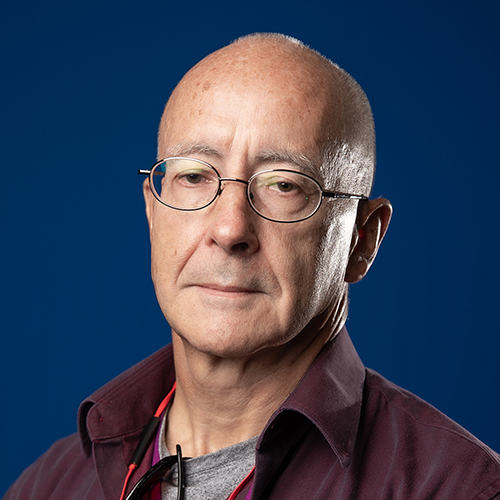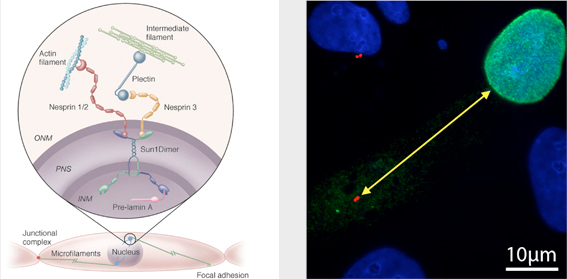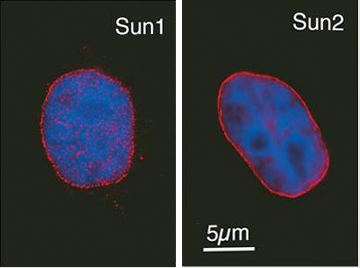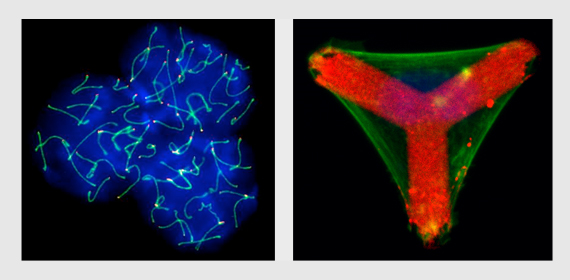Brian Burke

Adjunct Senior Principal Investigator
Email: brian_burke@asrl.a-star.edu.sg
Research themes: Cell Biology
Biography
Brian Burke received his Ph.D. from Imperial College of the University of London where he carried out investigations into the molecular structure of human erythrocyte spectrin. This was followed by postdoctoral work with Graham Warren at the EMBL in Heidelberg and with Larry Gerace at Johns Hopkins University in Baltimore, Maryland. During this period he developed a longstanding interest in the structure and function of the nuclear envelope.
After a period as staff scientist at the EMBL, Dr. Burke joined the faculty of Harvard Medical School in the Department of Cell Biology. He later served as Professor of Cell Biology and Anatomy at the University of Calgary and as the Haskell Hess Professor of Cell Biology at the University of Florida College of Medicine. Dr Burke joined IMB in August 2019 as a Principal Investigator. Since 01 April 2020, he joined Skin Research Institute of Singapore (SRIS) as a Research Director.
Together, SUN proteins and nesprins represent pairs of links in molecular chains that span the nuclear envelope and which mechanically couple nuclear structures with the cytoskleton. These SUN-nesprin pairs, which we have termed LINC complexes (for LInkers of the Nucleoskeleton and Cytoskeleton) play a crucial role in nuclear positioning and migration in a wide variety of cell types. In addition, they may provide a new mode of communication between the cytoplasm and nucleus and could potentially mediate aspects of mechanotransduction.

(Left) Overview of LINC complex organization. Inner nuclear membrane SUN domain proteins function as tethers for outer nuclear membrane nesprins. Together these proteins represent links in a molecular chain that connects nuclear components to the cytoskeleton.
(Right) Nesprin 4 (in green) is a new member of the nesprin family and has the capacity to bind kinesin, a microtubule motor protein. Expression of nesprin 4 in HeLa cells is associated with the displacement (indicated by the yellow arrow) of the centrosome (red) from its normal location adjacent to the nucleus. DNA within nuclei is shown in blue.

Both Sun1 and Sun2, the predominant SUN domain proteins of mammalian somatic cells, are localized to the nuclear periphery. DNA within the nucleus is shown in blue.

(Left) LINC complex components (red), including a new nesprin-like protein, are associated with telomeres in primary spermatocytes that are undergoing meiosis. DNA is revealed with a blue fluorescent dye while synaptonemal complexes, the structures that link homologous chromosome pairs, are shown in green. (Right) Aligned stack nuclei.
Group Members
XIE Wei / Alexandre CHOJNOWSKI (Senior Research Fellow)
Martina MARIC / LEE Yin Loon / Rajkumar RAMALINGAM (Research Fellow)
YE Xianqian (Senior Research Officer)
NYEIN Thet Khaing (Research Officer)
Lim JSY, Wright GD, Burke B, Xie W. A user-interactive algorithm quantifying nuclear pore complex distribution within the nuclear lamina network in single molecular localization microscopic image. Methods. 2019 Mar 15;157:42-46. doi: 10.1016/j.ymeth.2018.09.006. Epub 2018 Sep 27. PMID: 30268406.
Sundaram GM, Ismail HM, Bashir M, Muhuri M, Vaz C, Nama S, Ow GS, Vladimirovna IA, Ramalingam R, Burke B, Tanavde V, Kuznetsov V, Lane EB, Sampath P. EGF hijacks miR-198/FSTL1 wound-healing switch and steers a two-pronged pathway toward metastasis. J Exp Med. 2017 Oct 2;214(10):2889-2900. doi: 10.1084/jem.20170354. Epub 2017 Aug 21. PMID: 28827448; PMCID: PMC5626400.
Di Pascale F, Nama S, Muhuri M, Quah S, Ismail HM, Chan XHD, Sundaram GM, Ramalingam R, Burke B, Sampath P. C/EBPβ mediates RNA polymerase III-driven transcription of oncomiR-138 in malignant gliomas. Nucleic Acids Res. 2018 Jan 9;46(1):336-349. doi: 10.1093/nar/gkx1105. PMID: 29136251; PMCID: PMC5758869.
Gimpel P, Lee YL, Sobota RM, Calvi A, Koullourou V, Patel R, Mamchaoui K, Nédélec F, Shackleton S, Schmoranzer J, Burke B, Cadot B, Gomes ER. Nesprin-1α-Dependent Microtubule Nucleation from the Nuclear Envelope via Akap450 Is Necessary for Nuclear Positioning in Muscle Cells. Curr Biol. 2017 Oct 9;27(19):2999-3009.e9. doi: 10.1016/j.cub.2017.08.031. Epub 2017 Sep 28. PMID: 28966089; PMCID: PMC5640514.
Xie W, Burke B. Nuclear networking. Nucleus. 2017 Jul 4;8(4):323-330. doi: 10.1080/19491034.2017.1296616. PMID: 28901826; PMCID: PMC5597296.
Dong JM, Tay FP, Swa HL, Gunaratne J, Leung T, Burke B, Manser E. Proximity biotinylation provides insight into the molecular composition of focal adhesions at the nanometer scale. Sci Signal. 2016 Jun 14;9(432):rs4. doi: 10.1126/scisignal.aaf3572. PMID: 27303058.
Xie W, Chojnowski A, Boudier T, Lim JS, Ahmed S, Ser Z, Stewart C, Burke B. A-type Lamins Form Distinct Filamentous Networks with Differential Nuclear Pore Complex Associations. Curr Biol. 2016 Oct 10;26(19):2651-2658. doi: 10.1016/j.cub.2016.07.049. Epub 2016 Sep 15. PMID: 27641764.
Chojnowski A, Ong PF, Wong ES, Lim JS, Mutalif RA, Navasankari R, Dutta B, Yang H, Liow YY, Sze SK, Boudier T, Wright GD, Colman A, Burke B, Stewart CL, Dreesen O. Progerin reduces LAP2α-telomere association in Hutchinson-Gilford progeria. Elife. 2015 Aug 27;4:e07759. doi: 10.7554/eLife.07759. PMID: 26312502; PMCID: PMC4565980.
Calvi A, Wong AS, Wright G, Wong ES, Loo TH, Stewart CL, Burke B. SUN4 is essential for nuclear remodeling during mammalian spermiogenesis. Dev Biol. 2015 Nov 15;407(2):321-30. doi: 10.1016/j.ydbio.2015.09.010. Epub 2015 Sep 28. PMID: 26417726.
Stewart CL, Burke B. The missing LINC: a mammalian KASH-domain protein coupling meiotic chromosomes to the cytoskeleton. Nucleus. 2014 Jan-Feb;5(1):3-10. doi: 10.4161/nucl.27819. Epub 2014 Jan 23. PMID: 24637401; PMCID: PMC4028352.
Burke B, Stewart CL. Functional architecture of the cell's nucleus in development, aging, and disease. Curr Top Dev Biol. 2014;109:1-52. doi: 10.1016/B978-0-12-397920-9.00006-8. PMID: 24947235.
Horn HF, Kim DI, Wright GD, Wong ES, Stewart CL, Burke B, Roux KJ. A mammalian KASH domain protein coupling meiotic chromosomes to the cytoskeleton. J Cell Biol. 2013 Sep 30;202(7):1023-39. doi: 10.1083/jcb.201304004. Epub 2013 Sep 23. PMID: 24062341; PMCID: PMC3787381.
Burke B. PREEParing for mitosis. Dev Cell. 2013 Aug 12;26(3):221-2. doi: 10.1016/j.devcel.2013.07.018. PMID: 23948250.
Horn HF, Brownstein Z, Lenz DR, Shivatzki S, Dror AA, Dagan-Rosenfeld O, Friedman LM, Roux KJ, Kozlov S, Jeang KT, Frydman M, Burke B, Stewart CL, Avraham KB. The LINC complex is essential for hearing. J Clin Invest. 2013 Feb;123(2):740-50. doi: 10.1172/JCI66911. Epub 2013 Jan 25. PMID: 23348741; PMCID: PMC3561815.
Burke B. It takes KASH to hitch to the SUN. Cell. 2012 May 25;149(5):961-3. doi: 10.1016/j.cell.2012.05.004. PMID: 22632963.
Roux KJ, Crisp ML, Liu Q, Kim D, Kozlov S, Stewart CL, Burke B. Nesprin 4 is an outer nuclear membrane protein that can induce kinesin-mediated cell polarization. Proc Natl Acad Sci U S A. 2009 Feb 17;106(7):2194-9. doi: 10.1073/pnas.0808602106. Epub 2009 Jan 21. PMID: 19164528; PMCID: PMC2650131.
Han X, Feng X, Rattner JB, Smith H, Bose P, Suzuki K, Soliman MA, Scott MS, Burke BE, Riabowol K. Tethering by lamin A stabilizes and targets the ING1 tumour suppressor. Nat Cell Biol. 2008 Nov;10(11):1333-40. doi: 10.1038/ncb1792. Epub 2008 Oct 5. PMID: 18836436.
Schermelleh L, Carlton PM, Haase S, Shao L, Winoto L, Kner P, Burke B, Cardoso MC, Agard DA, Gustafsson MG, Leonhardt H, Sedat JW. Subdiffraction multicolor imaging of the nuclear periphery with 3D structured illumination microscopy. Science. 2008 Jun 6;320(5881):1332-6. doi: 10.1126/science.1156947. PMID: 18535242; PMCID: PMC2916659.
Stewart CL, Roux KJ, Burke B. Blurring the boundary: the nuclear envelope extends its reach. Science. 2007 Nov 30;318(5855):1408-12. doi: 10.1126/science.1142034. PMID: 18048680.
Liu Q, Pante N, Misteli T, Elsagga M, Crisp M, Hodzic D, Burke B, Roux KJ. Functional association of Sun1 with nuclear pore complexes. J Cell Biol. 2007 Aug 27;178(5):785-98. doi: 10.1083/jcb.200704108. PMID: 17724119; PMCID: PMC2064544.
Ivorra C, Kubicek M, González JM, Sanz-González SM, Alvarez-Barrientos A, O'Connor JE, Burke B, Andrés V. A mechanism of AP-1 suppression through interaction of c-Fos with lamin A/C. Genes Dev. 2006 Feb 1;20(3):307-20. doi: 10.1101/gad.349506. Erratum in: Genes Dev. 2006 Mar 15;20(6):747. PMID: 16452503; PMCID: PMC1361702.
Salina D, Enarson P, Rattner JB, Burke B. Nup358 integrates nuclear envelope breakdown with kinetochore assembly. J Cell Biol. 2003 Sep 15;162(6):991-1001. doi: 10.1083/jcb.200304080. Epub 2003 Sep 8. PMID: 12963708; PMCID: PMC2172838.
Burke B, Stewart CL. Life at the edge: the nuclear envelope and human disease. Nat Rev Mol Cell Biol. 2002 Aug;3(8):575-85. doi: 10.1038/nrm879. PMID: 12154369.
Burke B, Ellenberg J. Remodelling the walls of the nucleus. Nat Rev Mol Cell Biol. 2002 Jul;3(7):487-97. doi: 10.1038/nrm860. PMID: 12094215.
Salina D, Bodoor K, Eckley DM, Schroer TA, Rattner JB, Burke B. Cytoplasmic dynein as a facilitator of nuclear envelope breakdown. Cell. 2002 Jan 11;108(1):97-107. doi: 10.1016/s0092-8674(01)00628-6. PMID: 11792324.
ORCID
A*STAR celebrates International Women's Day

From groundbreaking discoveries to cutting-edge research, our researchers are empowering the next generation of female science, technology, engineering and mathematics (STEM) leaders.
Get inspired by our #WomeninSTEM
